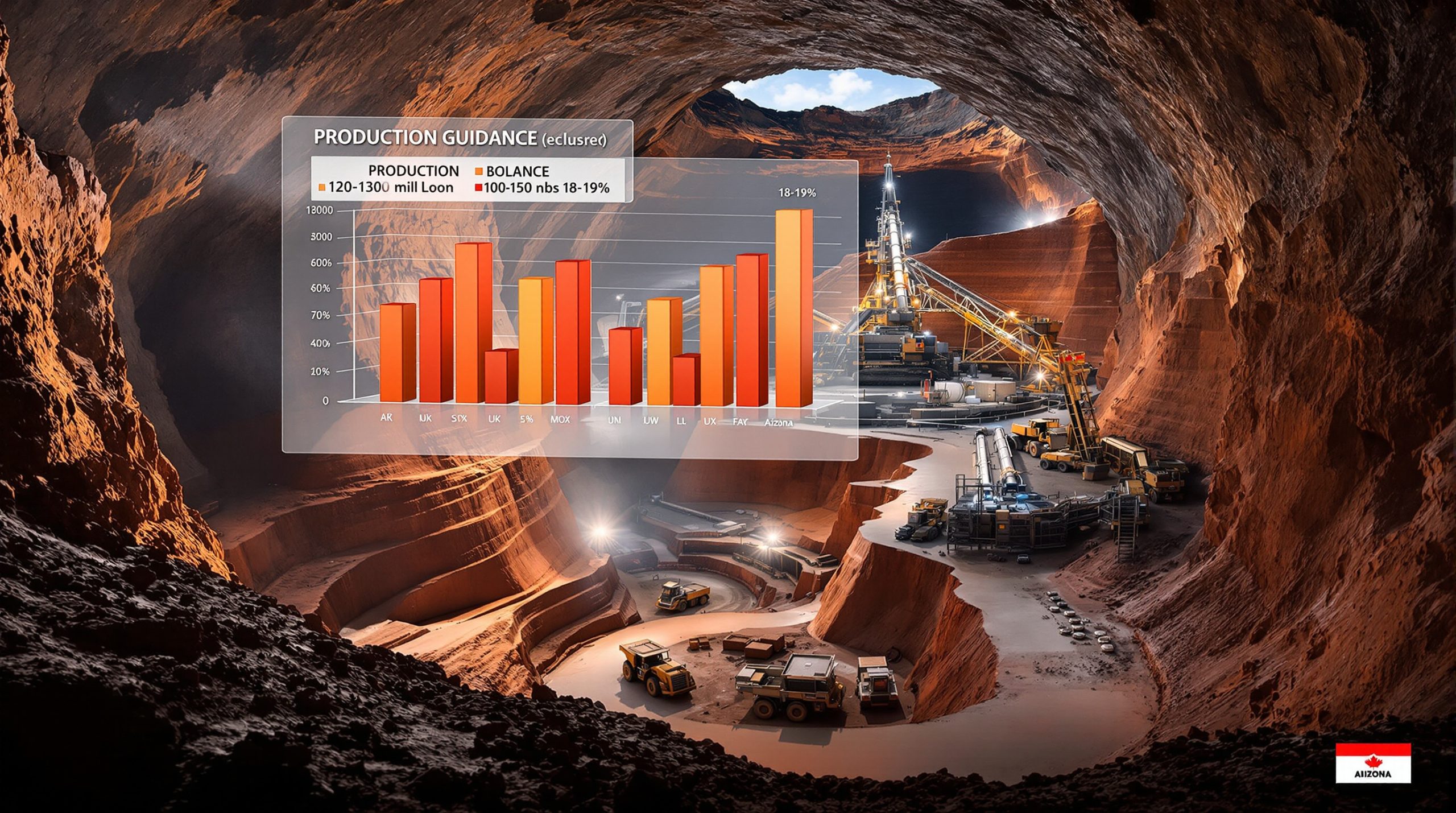Understanding SPAC Transactions in the Lithium Mining Sector
The critical minerals sector, particularly lithium mining, has seen increasing interest from Special Purpose Acquisition Companies (SPACs) in recent years. This alternative pathway to public markets offers unique advantages for pre-production mining companies seeking capital for development projects. Understanding how these transactions work and their implications is essential for investors navigating this complex space.
What is a SPAC Transaction in the Mining Context?
A Special Purpose Acquisition Company (SPAC) is essentially a publicly-listed shell company created specifically to acquire or merge with an existing private company, thereby taking it public without the traditional IPO process. In the mining sector, SPACs have emerged as an alternative financing vehicle, particularly for companies developing strategic minerals like lithium.
The typical structure involves:
- A SPAC raising capital through an IPO with the stated purpose of acquiring a target company
- A defined timeframe (usually 18-24 months) to complete an acquisition
- A merger process that transforms the private mining company into a publicly traded entity
- Potential for additional capital raises (PIPE investments) alongside the transaction
For lithium developers, this process can provide rapid access to public markets and significant capital infusions at earlier stages than traditional financing paths might allow.
The Strategic Value of Lithium Projects in North America
North American lithium projects carry particular strategic significance in today's market due to several converging factors:
- Supply Chain Security: The U.S. government has identified lithium as a critical mineral essential for national security and economic prosperity
- EV Manufacturing Growth: Major automakers are establishing battery production facilities across North America, creating demand for regionally-sourced materials
- Geopolitical Considerations: Reducing dependence on foreign sources of critical minerals has become a policy priority
Lithium projects located in jurisdictions like Nevada, Oregon, and Quebec potentially command premium valuations due to their strategic positioning in secure, mining-friendly regions with established infrastructure and proximity to end-users. Moreover, recent lithium industry tax breaks in several countries have further incentivized development in these regions.
Benefits of SPAC Transactions for Mining Companies
For mining companies, particularly those in the pre-production stage of development, SPAC transactions offer several potential advantages over traditional financing methods:
Capital Acceleration Opportunities
- Immediate Funding: SPAC transactions can provide substantial capital infusions that might otherwise require multiple financing rounds
- Valuation Premiums: Companies with strategic assets may secure higher valuations through SPACs than through traditional private placements
- Reduced Dilution Risk: A single transaction may replace numerous smaller equity raises that would incrementally dilute existing shareholders
- Development Timeline Acceleration: With sufficient capital secured, companies can pursue parallel workstreams rather than sequential development phases
Access to U.S. Capital Markets
- Deeper Investor Pool: U.S. markets provide access to specialized institutional investors focused on critical minerals and clean energy transition
- Enhanced Liquidity: U.S. exchanges typically offer higher trading volumes and greater analyst coverage
- ESG Investment Alignment: Many U.S. institutional investors have mandates to invest in companies supporting decarbonization goals
- Strategic Partnership Potential: Public listing increases visibility among potential downstream partners like battery-grade lithium refinery operators and manufacturers
Comparative Analysis of Recent Lithium SPAC Transactions
The lithium sector has seen several notable SPAC transactions in recent years, establishing certain patterns and valuation benchmarks:
| Company | Transaction Year | Implied Valuation | Resource Size | Development Stage |
|---|---|---|---|---|
| Piedmont Lithium | 2021 | $1.4 billion | 40Mt @ 1.1% Li₂O | Pre-construction |
| Solid Power | 2021 | $1.2 billion | Battery technology | Pre-commercial |
| Lithium Americas | 2023 | $650 million | Thacker Pass project | Construction |
| Ioneer | 2022 | $490 million | Rhyolite Ridge project | Permitting |
This table illustrates how factors like resource size, project location, development stage, and broader market conditions influence transaction valuations in the sector. Current mining industry trends suggest this activity will continue to accelerate.
Key Risks and Challenges in Lithium SPAC Transactions
While SPAC transactions offer significant opportunities, they also present unique challenges and risks that investors should carefully consider:
Transaction Execution Uncertainties
- Regulatory Hurdles: Mining projects face multiple layers of regulatory review across jurisdictions
- Market Timing Risk: Lithium market sentiment can shift dramatically during the transaction process
- Shareholder Approval: Transactions typically require approval from both SPAC investors and target company shareholders
- SPAC Redemption Risk: SPAC shareholders may redeem their shares prior to transaction completion, reducing available capital
According to Jindalee Lithium's recent announcement, securing adequate financing remains a key challenge even for companies with promising assets.
Post-Merger Integration Considerations
- Operational Focus: The transaction process can divert management attention from project development
- Public Company Requirements: Private companies must rapidly adapt to public company reporting and governance standards
- Shareholder Base Evolution: The investor profile often shifts from resource-focused to generalist investors
- Market Expectations Management: Public markets may have different timelines and milestones expectations
Evaluating Lithium Project Quality in SPAC Transactions
For investors assessing potential or announced SPAC transactions in the lithium sector, evaluating the underlying project quality is essential:
Geological and Technical Factors
- Resource Size and Grade: Larger, higher-grade resources generally support longer mine lives and better economics
- Extraction Technology: Different lithium extraction methods carry varying costs, timelines, and environmental impacts
- Metallurgy and Recovery Rates: The efficiency of lithium extraction and processing significantly impacts project economics
- Infrastructure Requirements: Projects with existing access to power, water, and transportation have distinct advantages
The growing interest in lithium brine market insights demonstrates the importance of understanding different extraction methodologies when evaluating potential investments.
Economic Considerations
- Capital Intensity: Initial capital requirements relative to production capacity
- Operating Cost Position: Where the project sits on the global cost curve for lithium production
- Time to Production: Realistic timeline from financing to first production and commercial ramp-up
- Permitting Progress: Status of environmental and operational permits needed for development
Investment Considerations for Lithium SPAC Opportunities
When evaluating investment opportunities in lithium-focused SPAC transactions, investors should consider several key factors as outlined in comprehensive investing guide 2025 publications:
Short-Term Market Dynamics
- Initial Market Reception: The market's response to announcement provides insights into investor perception
- PIPE Investor Quality: The caliber of private investment participants signals institutional confidence
- Redemption Rates: Low redemption rates suggest stronger investor conviction in the business combination
- Technical Support Levels: Price action following announcement can establish important technical levels
Long-Term Value Creation Potential
- Management Track Record: Prior success in developing mining projects is a critical indicator
- Strategic Positioning: The project's competitive advantages within the broader lithium supply landscape
- Offtake Agreements: Existing relationships with battery manufacturers or automotive OEMs
- Expansion Potential: Additional exploration upside or processing expansion opportunities
The recent strategic agreement with the US Department of Energy by some players in this space highlights how government partnerships can enhance long-term value.
The Future Outlook for Lithium SPACs
The market for lithium-focused SPAC transactions continues to evolve alongside broader market conditions and sector-specific factors:
- Increasing Selectivity: Investors have become more discriminating about project quality and team experience
- Regulatory Evolution: SEC guidance on SPACs continues to develop, potentially affecting transaction structures
- Integration of ESG Metrics: Environmental and social considerations are increasingly central to transaction narratives
- Strategic vs. Financial Investors: Greater participation from strategic industry players rather than purely financial sponsors
FAQ: Lithium Mining SPAC Transactions
How do SPAC valuations for lithium companies compare to traditional IPOs?
SPAC valuations for lithium companies tend to be more forward-looking, often based on projected production and earnings rather than current financials. This can result in higher initial valuations compared to traditional IPOs, which typically price based on existing operations and near-term projections.
What happens to existing shareholders in a lithium company that merges with a SPAC?
Existing shareholders typically roll their equity into the new public entity, often with lock-up provisions restricting immediate sales. Their ownership percentage depends on the transaction structure, PIPE size, and SPAC redemption rates. Most structures allow founding shareholders to maintain significant ownership in the combined entity.
How does the transaction valuation compare to resource size for lithium projects?
Valuations typically range from $50-200 per tonne of lithium carbonate equivalent (LCE) resource, with variations based on grade, extraction technology, jurisdiction, and development stage. Projects with permits, definitive feasibility studies, or offtake agreements command premium valuations.
What are the key milestones investors should track after a SPAC merger announcement?
Critical post-announcement milestones include definitive agreement signing, PIPE funding confirmation, shareholder approval, regulatory clearances, transaction closing, and subsequent operational developments like permitting progress, construction decisions, and offtake partnerships.
Future Developments in the Jindalee Lithium SPAC Deal
As the critical minerals sector continues its evolution, several trends are likely to shape the future of lithium-focused SPAC transactions:
- Vertical Integration Opportunities: Increasing interest in transactions that combine upstream resources with midstream processing or downstream applications
- Consolidation Potential: SPACs may facilitate industry consolidation by providing capital for acquisitions after initial business combinations
- Technology Differentiation: Greater emphasis on proprietary extraction technologies that can reduce costs or environmental impacts
- International Expansion: U.S.-listed SPACs increasingly targeting international lithium assets in stable jurisdictions
For investors navigating this complex landscape, maintaining focus on fundamental project quality, management capability, and strategic positioning remains essential for identifying opportunities with sustainable long-term value creation potential.
Want to Spot the Next Major Mineral Discovery?
Discover why historic ASX mineral discoveries have generated substantial returns by exploring Discovery Alert's dedicated discoveries page, where the proprietary Discovery IQ model transforms complex mineral data into actionable insights that give investors a crucial market advantage.




